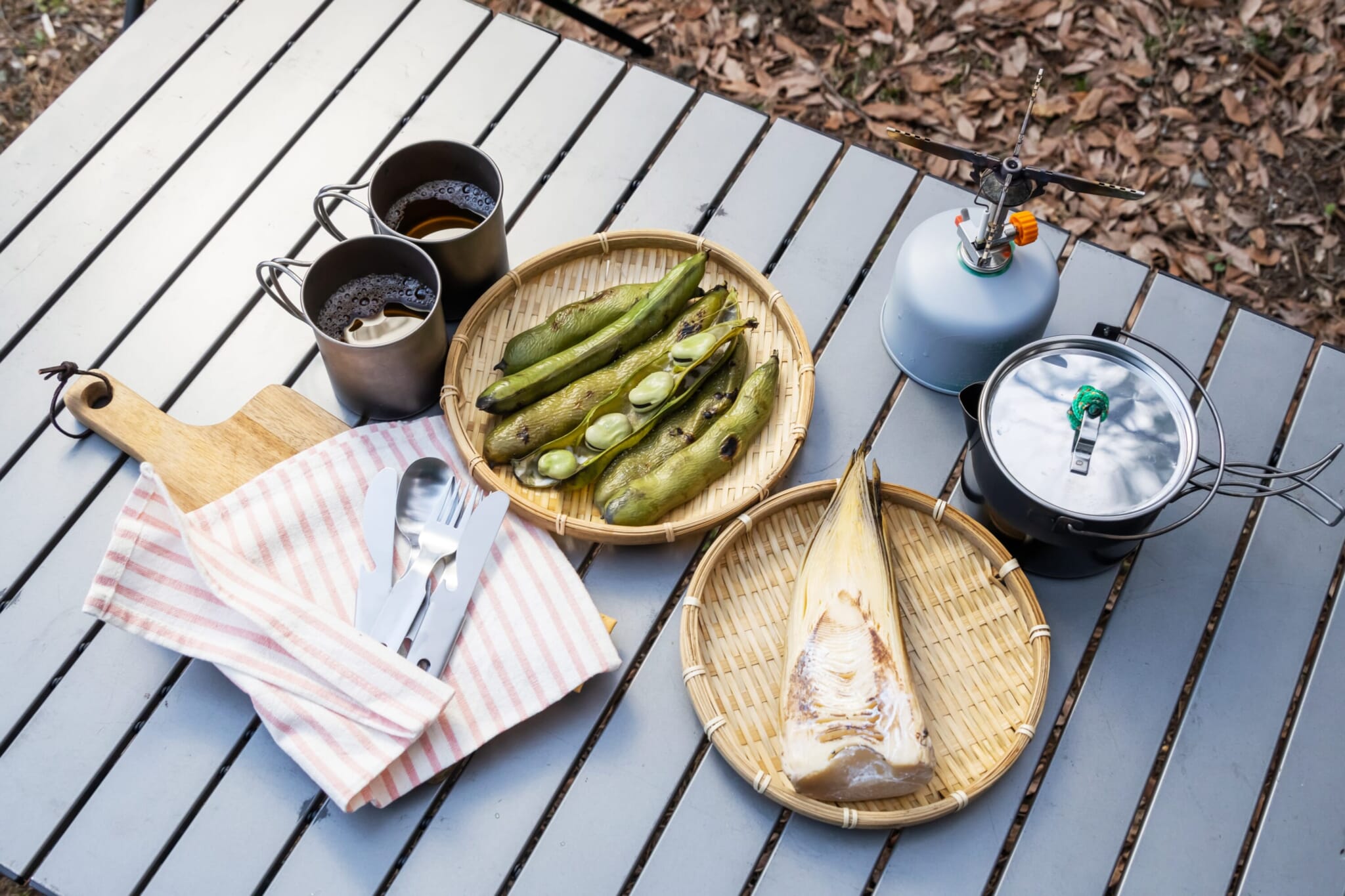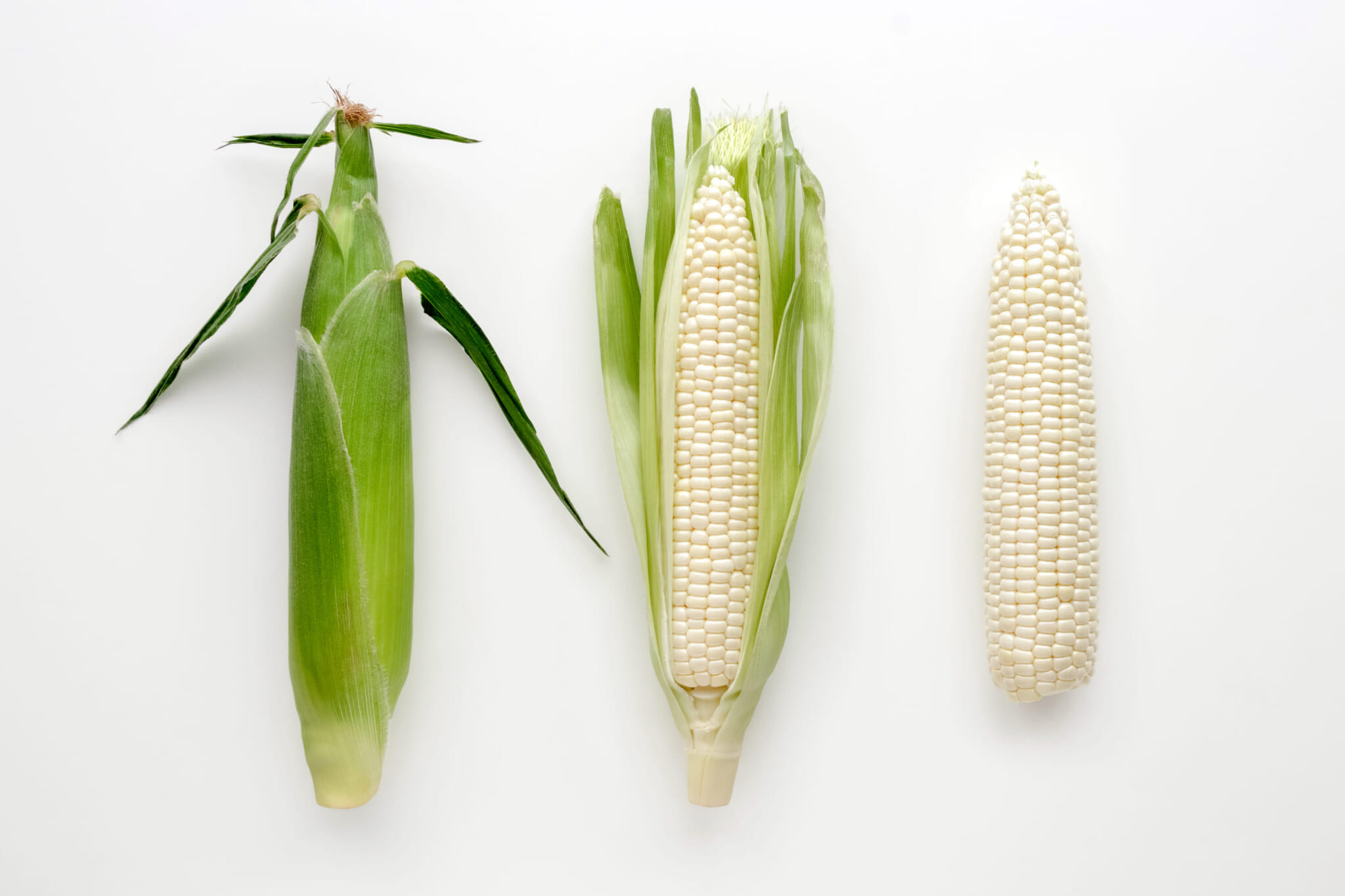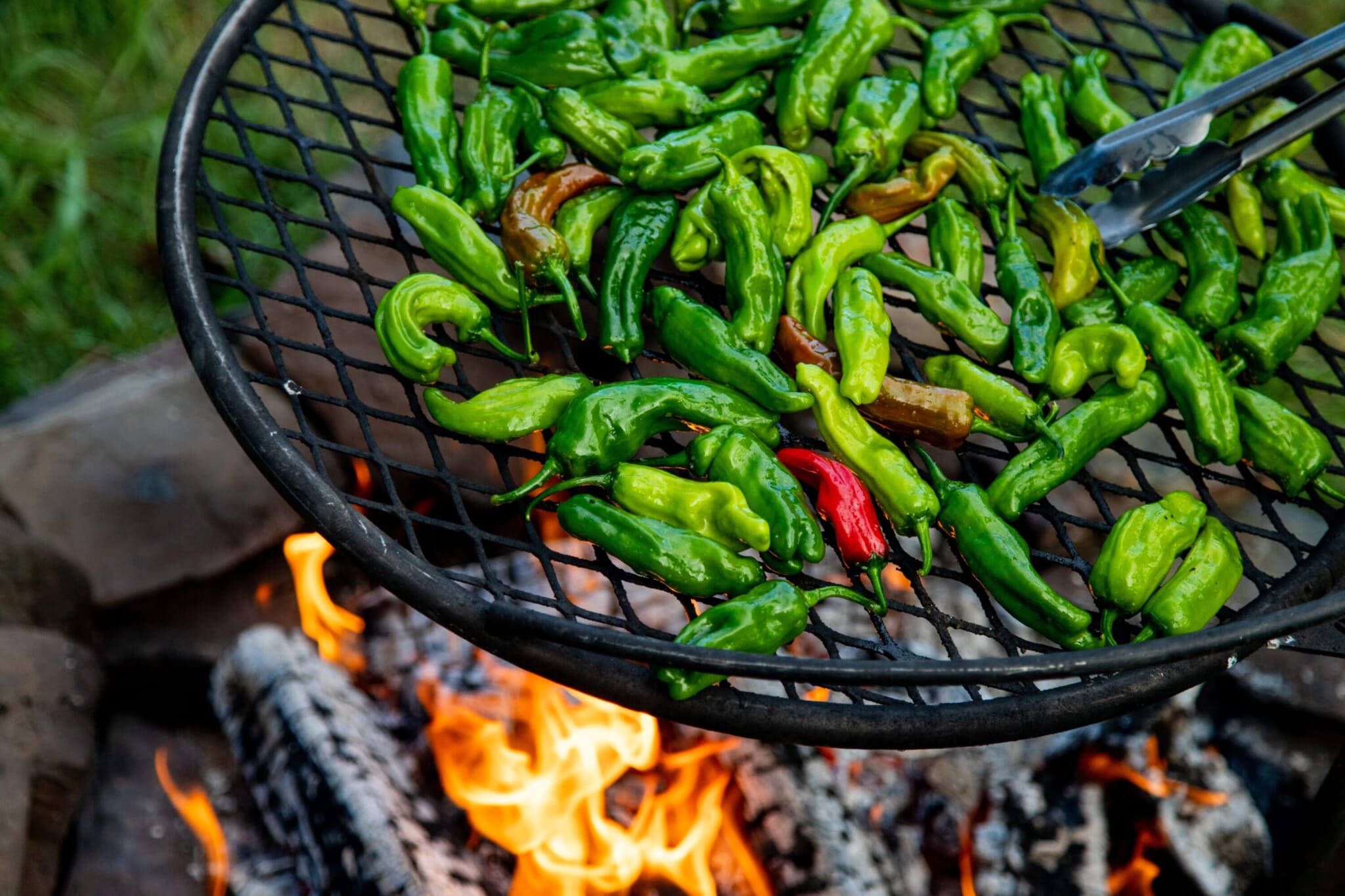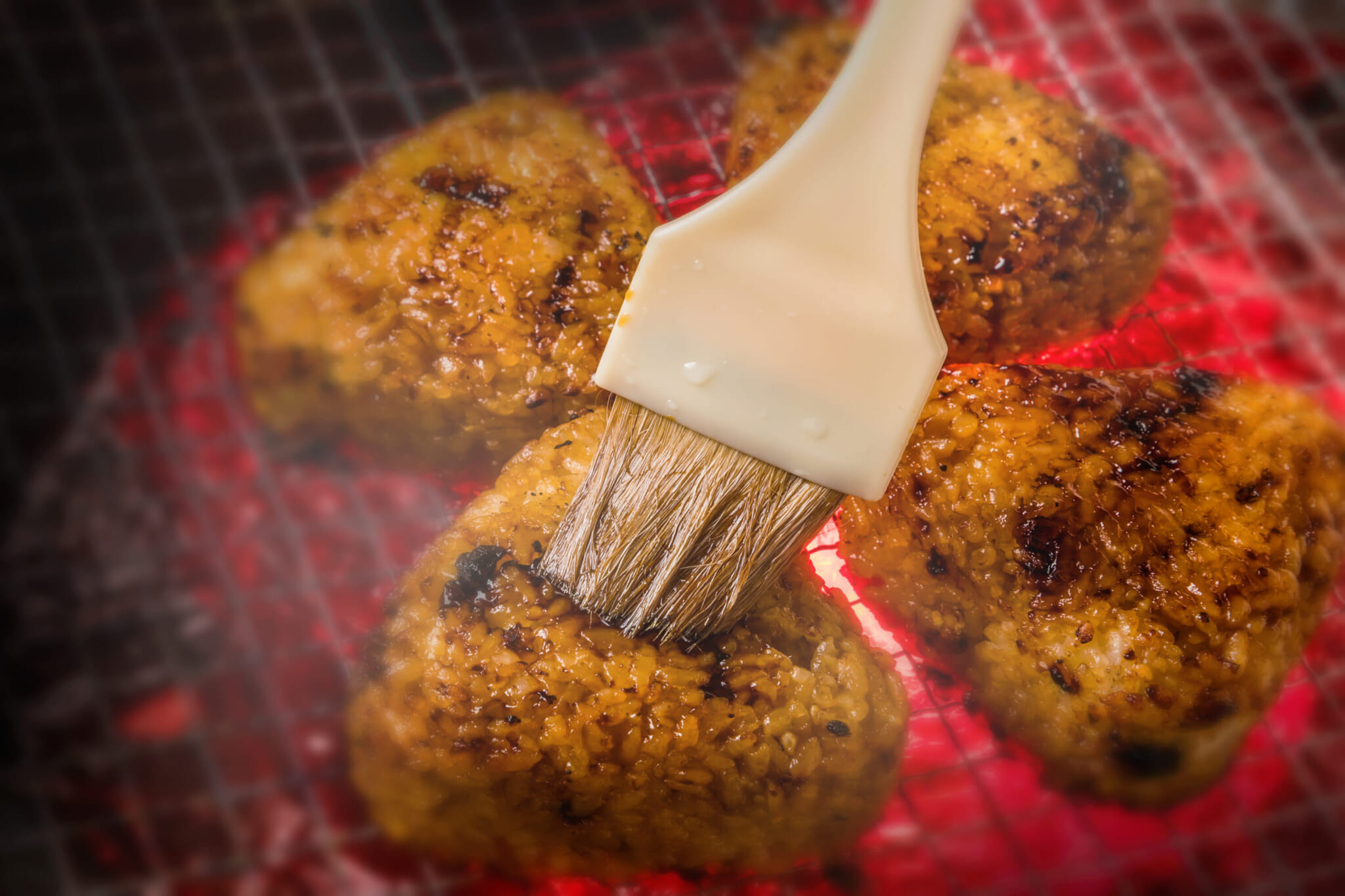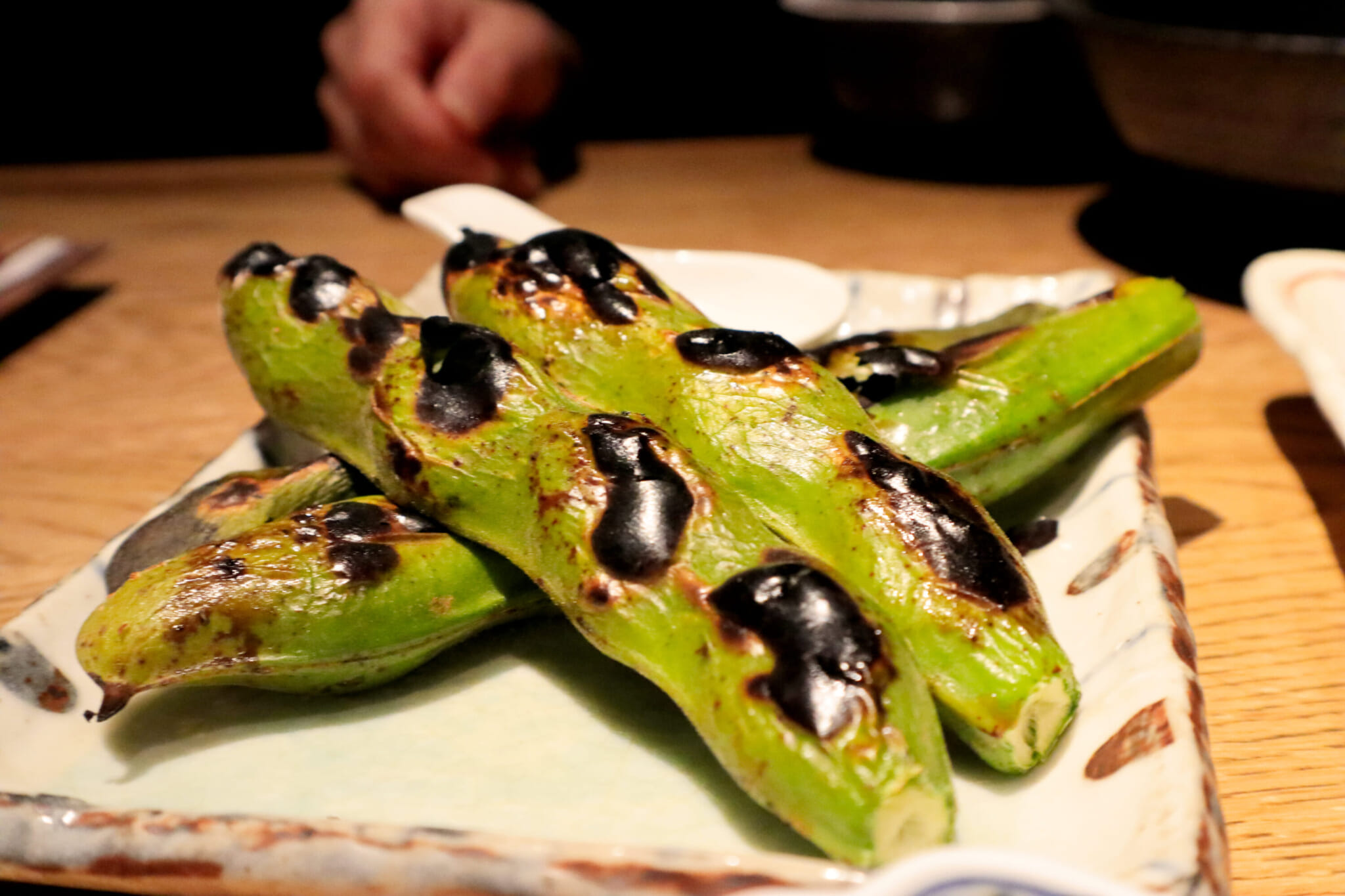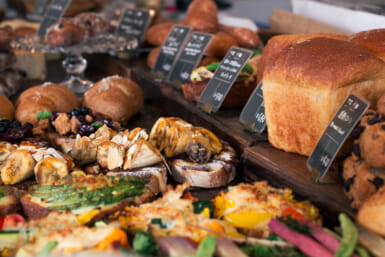When friends invite you to a barbecue, or even when you host one yourself, as a vegan, it can be hard to work out what to bring. In Japan, where the number of vegans or vegetarians per group is considerably smaller than that in the west, meat and seafood reign supreme. But fear not, vegans, as there is actually plenty of choice. From vegetables to tofu, you can impress your friends with an exciting array of completely vegan Japanese barbecue dishes.
1. Shishito
Shishito is a small green pepper, about the size of a chili pepper. It is readily available in Japanese supermarkets, often coming in plastic packets which hold around 10 peppers. Popping a shishito on the barbecue until its skin blackens and blisters brings out a delicious smoky taste. Incredibly moreish, one pack of shishito peppers probably won’t cut it.
The interesting thing about shishito pepper is that there is enough capsicum oil to make eyes water and faces redden. The chances of getting a spicy shishito are pretty low, but anyone who does will be in for a surprise. A good way to predict the spiciness of an individual pepper is to look and see if it is curved. If so, it’s more likely to be spicy. Straight shishito should be safe.
Serve shishito peppers drizzled with a little soy sauce or miso. The seeds are fine to eat, but the stalks are a little tough.
2. Atsu-age Tofu
Atsu-age tofu, which is basically thick-fried tofu, is a personal favorite ingredient for vegans when it comes to barbecues in Japan. When it is barbecued, atsu-age turns into a kind of tofu steak. It is incredibly easy to cook too. Simply put it as it is on the grill and cook until brown on both sides, seasoning as you go. Some recipes call for aluminum foil, but for a little crispiness, we recommend putting it straight on.
To serve, either cut and dip into ponzu or drizzle with soy sauce. To be extra fancy, top with thinly sliced myoga (Japanese ginger) in place of fish flakes and chopped negi. Divine.
3. Hokkaido Corn
Corn doesn’t necessarily have to be from Hokkaido, but the general consensus is that the tastiest is from the northern islands. For the grill, there are several different ways to cook our husky friend.
The easiest way is direct. Peel back the husk, drizzle with some olive oil and leave on until browned, turning to ensure even cooking. A severely underrated way to cook the corn is to take off the first couple of layers of the husk, leaving a layer or two to cover the corn. Pop some soy sauce inside and put it onto the barbecue, turning every so often until juicy and the husks are charred. It’s a real crowd-pleaser.
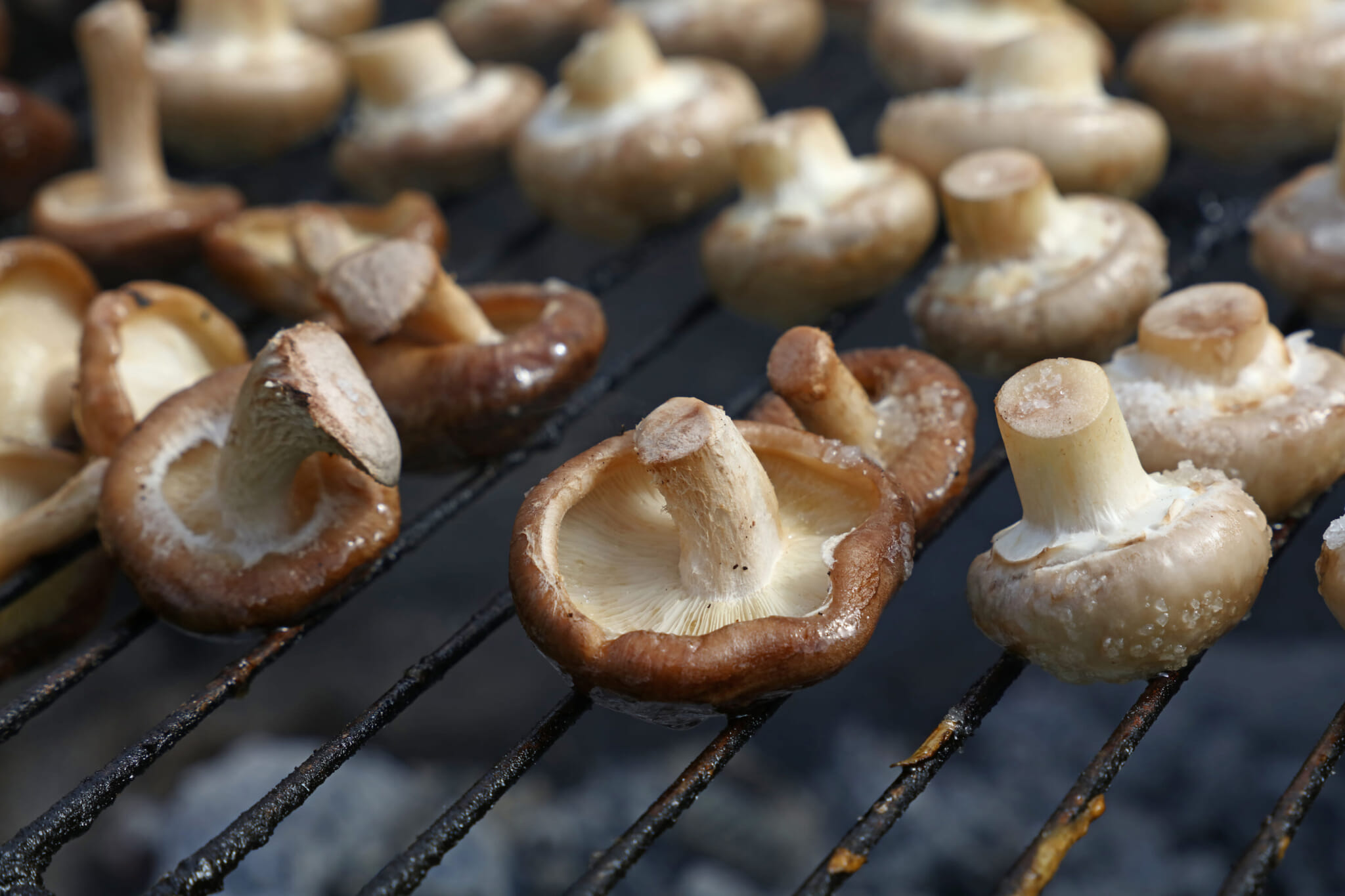
4. Shiitake
Shiitake mushrooms are available in many varieties in Japanese supermarkets and make for perfect vegan barbecue ingredients. To get them ready for a barbecue, cut off the stalks and make a cross-shape at the base of the stalk. Pop them straight onto the grill, underside up, drizzle with soy sauce and grill until they begin to release water.
Once the mushrooms are done, add salt or a spicy Japanese seasoning of your choice. The mushroom should also go well with some vegan ponzu. For yaki-tori style shiitake, after cutting off the stalks, cut the mushrooms in half and skewer. Guests will be clamoring for more.
5. Eringi
Eringi mushrooms are often overlooked in favor of their shiitake cousins, but you shouldn’t forget them. The fat stalks are perfect when cut up and cooked on the barbecue with a squeeze of lemon. The meaty texture contrasts well with all the vegetables. To prepare, cut the eringi into small oblong shapes, season with salt, wrap in foil and pop them on the barbecue. Yummy.
No harm in skewering, either.
6. Asparagus
Japanese asparagus is delicious, and comes in both thick and thin varieties. The thick type is especially good for a barbecue. It holds its juiciness for longer, which reduces the chance of it drying out. Cut and skewer.
7. Onigiri
Don’t knock it until you’ve tried it. Barbecued onigiri can be fantastic. And you can get them from anywhere. Splash with soy sauce or miso and grill until hot in the middle.
8. Sora-Mame (Japanese Fava Bean)
Japanese fava beans have distinctly thick skin and are sold in pods at the supermarket. Be quick when you spot them as they are only in season from April to June each year.
When on the barbecue, keep turning them over until the skin is completely charred, then take them off and enjoy popping the beans out of the pods. They taste great with shichimi togarashi or sprinkled with salt.
9. Skin-on Pineapple
Yes, you read that right. Farmers in Okinawa cultivate the snack pineapple, also known as the Bogor pineapple; a type of pineapple that has an edible skin. Pineapples are great charred on a barbecue, but waste can be a big downside. That isn’t a problem with this type. Compared to standard pineapples, snack pineapples are sweeter and juicer, which makes them perfect to round off a day of hard barbecuing.

